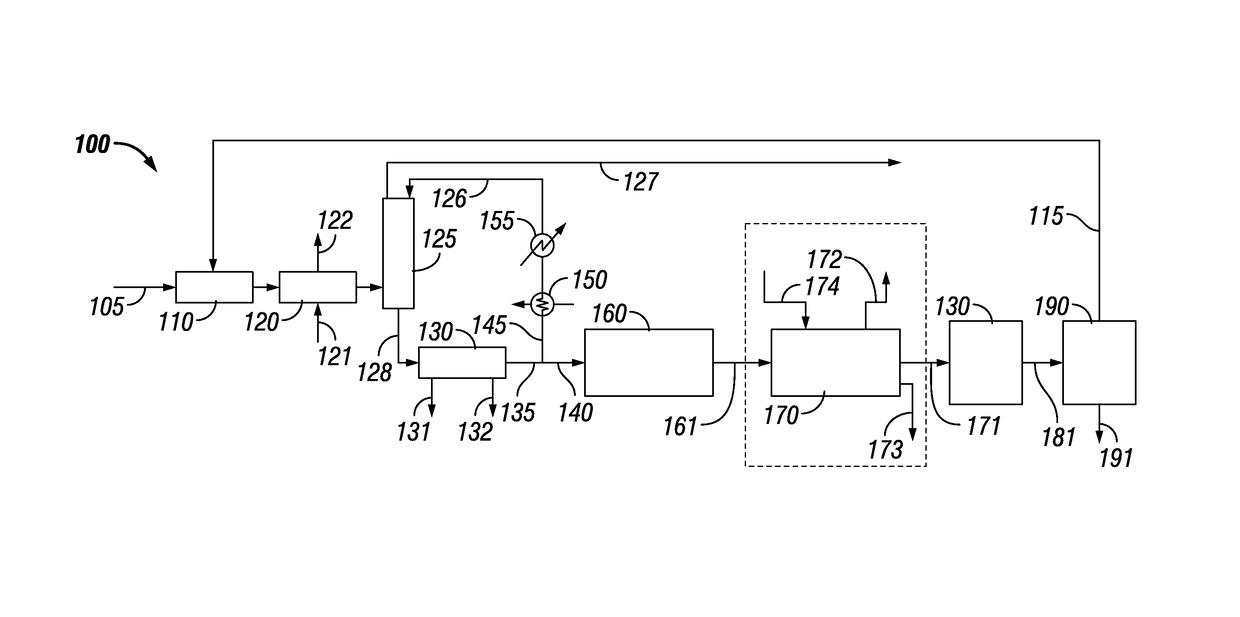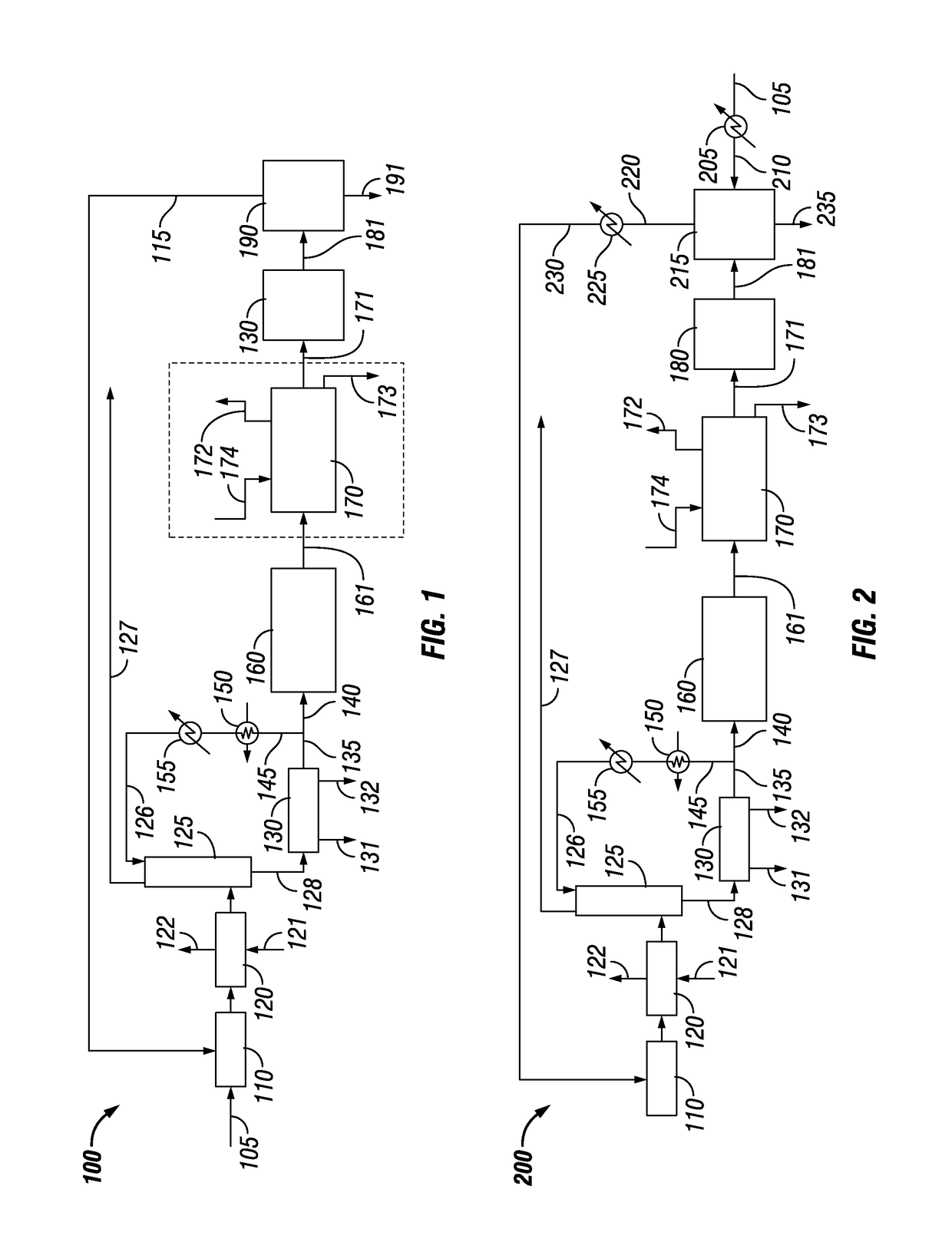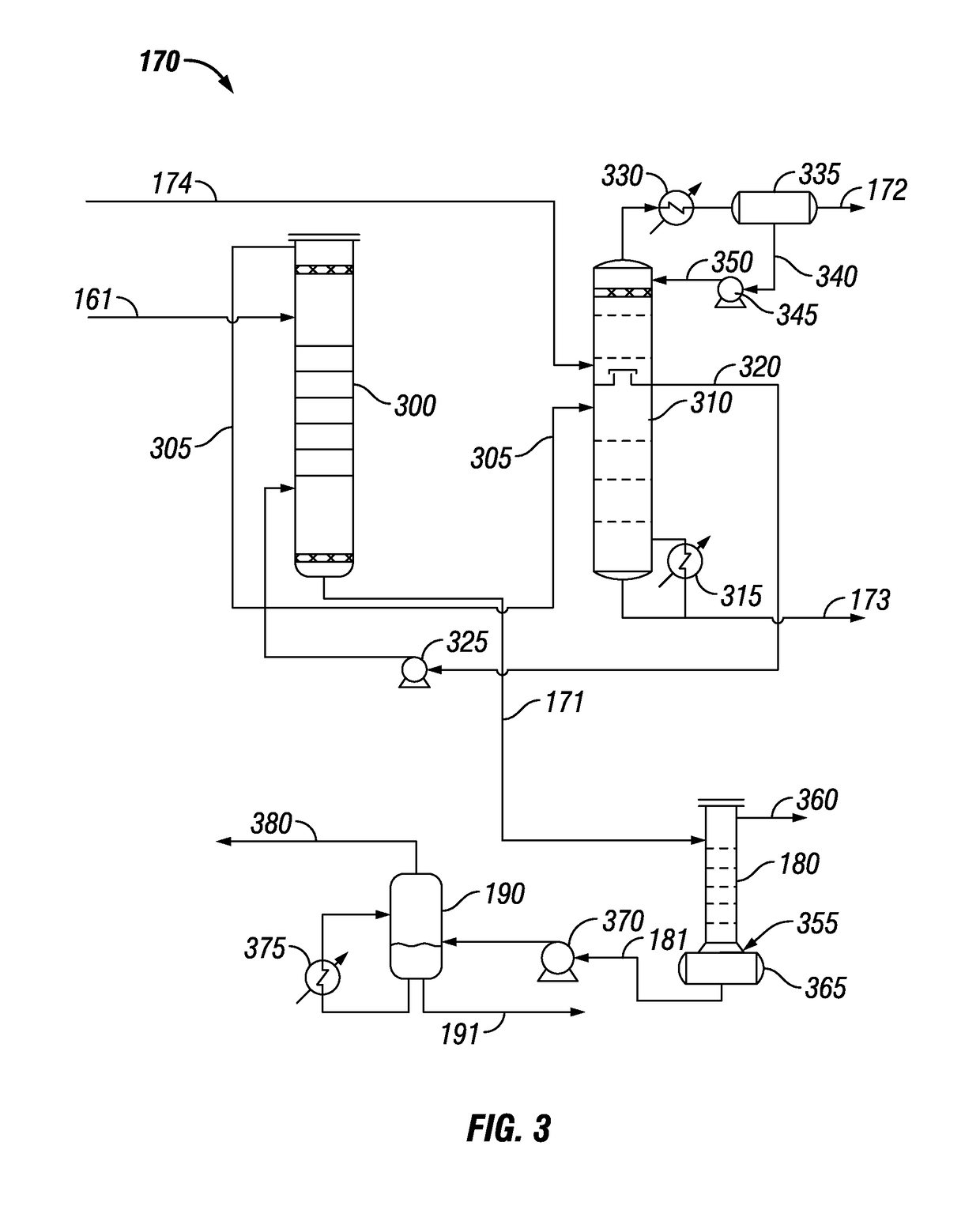Dissolved oil removal from quench water of gas cracker ethylene plants
a technology of ethylene plants and dissolved oils, which is applied in the direction of hydrocarbon oil treatment products, multi-stage water/sewage treatment, separation processes, etc., can solve the problems of bulk aqueous phase, fouling of dilution, and no of the aforementioned units are capable of removing dissolved oils
- Summary
- Abstract
- Description
- Claims
- Application Information
AI Technical Summary
Benefits of technology
Problems solved by technology
Method used
Image
Examples
example 1
[0063]The extraction column was operated with quench water flow of 12±1 liter / hr. containing 55 ppmw styrene and 410 ppmw indene which was fed to the top of the column, and contacted counter-currently with toluene solvent fed to the bottom of the packing at a rate of 12±1 liter / hr. The Toluene to quench water volumetric ratio is 1:1. The styrene and indene from the quench water is extracted by the toluene, and their concentration in the quench water is depleted at the column bottom outlet stream, measured an average 0.41 ppmw styrene, and an average of 0.45 ppmw indene. The quench water from the extractor was fed directly to the top of quench water stripper where it was stripped by steam generated in the bottom reboiler. The concentrations of styrene and indene were further reduced in the quench water stream leaving the bottom of the stripper to an average 0.12 ppmw styrene, and an average of 0.16 ppmw indene. Data for Example 1 is shown in Table 1.
[0064]
TABLE 1LLE inlet QWstyrene55...
example 2
[0065]The extraction column was operated with quench water flow of 12±1 liter / hr. containing 55 ppmw styrene and 410 ppmw indene which was fed to the top of the column, and contacted counter-currently with toluene solvent fed to the bottom of the packing at a rate of 2.5±0.2 liter / hr. The toluene to quench water volumetric ratio was 1:4.8 The styrene and indene from the quench water was extracted by the toluene, and their concentration in the quench water was depleted at the column bottom outlet stream, measured an average 0.91 ppmw styrene, and an average of 0.74 ppmw indene. The quench water from the extractor was fed directly to the top of quench water stripper where it was stripped by steam generated in the bottom reboiler. The concentrations of styrene and indene were further reduced in the quench water stream leaving the bottom of the stripper to an average 0.2 ppmw styrene, and an average of 0.2 ppmw indene. Data for Example 2 is shown in Table 2.
[0066]
TABLE 2LLE inlet QWstyr...
example 3
[0067]The extraction column was operated with quench water flow of 12±1 liter / hr. containing 55 ppmw styrene and 410 ppmw indene which was fed to the top of the column, and contacted counter-currently with toluene solvent fed to the bottom of the packing at a rate of 1.5±0.1 liter / hr. The Toluene to quench water volumetric ratio was 1:8. The styrene and indene from the quench water was extracted by the toluene, and their concentration in the quench water is depleted at the column bottom outlet stream, measured an average 1.13 ppmw styrene, and an average of 0.9 ppmw indene. The quench water from the extractor was fed directly to the top of quench water stripper where it is stripped by steam generated in the bottom reboiler. The concentrations of styrene and indene were further reduced in the quench water stream leaving the bottom of the stripper to an average 0.23 ppmw styrene, and an average of 0.3 ppmw indene. Data for Example 3 is shown in Table 3.
[0068]
TABLE 3RUNS TEST 3QUENCH W...
PUM
| Property | Measurement | Unit |
|---|---|---|
| temperature | aaaaa | aaaaa |
| temperatures | aaaaa | aaaaa |
| temperatures | aaaaa | aaaaa |
Abstract
Description
Claims
Application Information
 Login to View More
Login to View More - R&D
- Intellectual Property
- Life Sciences
- Materials
- Tech Scout
- Unparalleled Data Quality
- Higher Quality Content
- 60% Fewer Hallucinations
Browse by: Latest US Patents, China's latest patents, Technical Efficacy Thesaurus, Application Domain, Technology Topic, Popular Technical Reports.
© 2025 PatSnap. All rights reserved.Legal|Privacy policy|Modern Slavery Act Transparency Statement|Sitemap|About US| Contact US: help@patsnap.com



